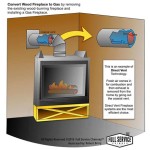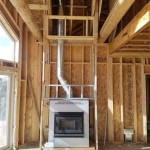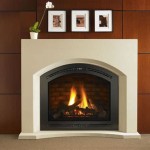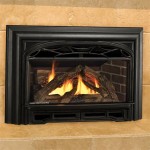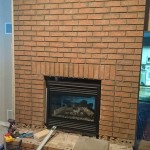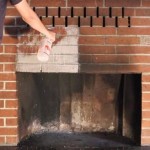Fireplace Floor Tile: A Comprehensive Guide
Fireplace floor tile, also known as a hearth or surround tile, is a crucial element in fireplace design and functionality. It serves as a protective barrier for the surrounding floor, shielding it from embers, ash, and radiated heat. Beyond its practical purpose, fireplace floor tile significantly contributes to the aesthetic appeal of the fireplace, complementing the overall style of the room. Choosing the right tile requires careful consideration of factors such as material, size, shape, color, and texture, all while adhering to safety standards and building codes.
The selection of fireplace floor tile is more than simply picking an attractive option. It involves understanding the various types of tile available, their thermal properties, installation requirements, and long-term maintenance needs. A well-chosen and properly installed tile surround not only protects the integrity of your flooring but also enhances the visual appeal of your fireplace, transforming it into a focal point of the room. Improper selection, on the other hand, can lead to safety hazards, costly repairs, and a diminished aesthetic.
Understanding the Role of Fireplace Floor Tile
The primary function of fireplace floor tile is to provide a non-combustible surface around the fireplace opening. This surface protects the surrounding flooring, whether it be hardwood, carpet, or other materials, from sparks, embers, and the intense heat emitted by the fire. Burning wood can release small particles that could ignite flammable materials if they come into contact. The tile acts as a buffer, preventing accidental fires and minimizing the risk of damage to the adjacent floor.
Beyond fire protection, fireplace floor tile also serves a practical purpose in containing ash and soot. These byproducts of combustion can be messy and difficult to clean up, particularly from porous surfaces like carpets or unfinished wood. A tiled hearth provides a smooth, easily cleanable surface, simplifying the maintenance of the fireplace area. A quick sweep or damp mop is typically all that is needed to remove ash and soot from tile surfaces.
Aesthetically, fireplace floor tile plays a significant role in enhancing the overall design of the fireplace. It offers an opportunity to introduce color, texture, and pattern to the room, complementing the style of the fireplace itself and the surrounding décor. The tile can be used to create a subtle, understated look or a bold, eye-catching statement, depending on the design preferences of the homeowner. The range of available tile materials, colors, and patterns is vast, allowing for a high degree of customization.
Key Considerations When Selecting Fireplace Floor Tile
Selecting the right fireplace floor tile involves several key considerations, starting with the type of tile material. Different materials offer varying degrees of heat resistance, durability, and aesthetic appeal. Common options include ceramic tile, porcelain tile, natural stone tile (such as slate, granite, and marble), and even metal tiles in some contemporary designs. Each material has its own set of advantages and disadvantages that should be carefully weighed.
The size and shape of the tile are also important factors to consider. Larger tiles can create a more seamless look, while smaller tiles allow for more intricate patterns and designs. The shape of the tile, whether square, rectangular, hexagonal, or custom-cut, can also contribute to the overall aesthetic. The size and shape should be proportionate to the size of the fireplace and the surrounding room. Careful planning is essential to ensure a balanced and visually appealing design.
Color and texture play a significant role in the aesthetic impact of the fireplace floor tile. The color of the tile should complement the color scheme of the room and the style of the fireplace. Neutral colors like beige, gray, and white are versatile choices that can work well in a variety of settings. However, bolder colors can be used to create a more dramatic effect. The texture of the tile can also add visual interest and depth to the design. Textured tiles can provide a more tactile and rustic feel, while smooth tiles offer a more sleek and modern look.
Finally, cost is always a consideration. The price of fireplace floor tile can vary widely depending on the material, size, and complexity of the design. Natural stone tiles tend to be more expensive than ceramic or porcelain tiles. Installation costs can also vary depending on the complexity of the project and the experience of the installer. It is important to establish a budget early in the process and to shop around for the best prices.
Types of Fireplace Floor Tile Materials
Ceramic tile is a popular choice for fireplace floor tile due to its affordability, durability, and wide range of design options. It is made from clay that is fired at high temperatures, resulting in a hard, water-resistant surface. Ceramic tile is relatively easy to install and maintain, making it a practical choice for many homeowners. However, it is not as heat-resistant as some other materials, so it is best suited for fireplaces that do not generate extremely high temperatures.
Porcelain tile is another excellent option for fireplace floor tile. It is similar to ceramic tile but is made from a finer clay and fired at higher temperatures, resulting in a denser and more durable product. Porcelain tile is highly resistant to heat, scratches, and stains, making it a good choice for high-traffic areas and fireplaces that generate a lot of heat. It also comes in a wide range of colors, patterns, and textures, offering a high degree of design flexibility.
Natural stone tile, such as slate, granite, and marble, offers a luxurious and timeless look for fireplace floor tile. These materials are highly durable and heat-resistant, making them a good choice for any type of fireplace. Slate tile has a natural, textured surface that adds character and warmth to the room. Granite tile is known for its strength and durability, as well as its unique patterns and colors. Marble tile is a classic choice that adds elegance and sophistication to the fireplace area. However, natural stone tiles can be more expensive than ceramic or porcelain tiles and may require more specialized installation techniques.
Metal tiles, such as copper or stainless steel, are a more contemporary option for fireplace floor tile. These materials offer a sleek and modern look that can complement a minimalist or industrial style. Metal tiles are also highly durable and heat-resistant, making them a practical choice for high-heat fireplaces. However, metal tiles can be more expensive than other options and may require specialized cleaning and maintenance.
Installation Considerations for Fireplace Floor Tile
Proper installation is critical for the safety and longevity of fireplace floor tile. The installation process typically involves preparing the subfloor, applying a layer of mortar, setting the tiles, and grouting the joints. It is important to ensure that the subfloor is level and stable before installing the tile. Uneven or unstable subfloors can cause the tile to crack or shift over time.
The type of mortar used is also important. A heat-resistant mortar should be used to withstand the high temperatures generated by the fireplace. The mortar should be applied evenly to the subfloor, and the tiles should be firmly pressed into place. Spacers should be used to ensure consistent grout lines. After the mortar has dried, the grout can be applied. The grout should be carefully worked into the joints between the tiles and then wiped clean.
For larger or more complex installations, it is often best to hire a professional tile installer. A professional installer will have the experience and expertise to ensure that the job is done correctly and safely. They will also be familiar with local building codes and regulations, which can vary depending on the location. Hiring a professional installer can save time and money in the long run by preventing costly mistakes.
Safety is paramount during the installation process. Wear appropriate safety gear, including gloves, eye protection, and a dust mask, to protect yourself from injury and exposure to hazardous materials. Ensure that the work area is well-ventilated to prevent the build-up of dust and fumes. Follow all manufacturer's instructions for the mortar and grout products. Dispose of waste materials properly.
Maintaining Fireplace Floor Tile
Proper maintenance is essential for keeping fireplace floor tile looking its best and ensuring its long-term durability. Regular cleaning is important for removing ash, soot, and other debris that can accumulate on the tile surface. A quick sweep or damp mop is typically all that is needed to clean the tile. Avoid using harsh chemicals or abrasive cleaners, as these can damage the tile surface.
Grout lines can be particularly susceptible to staining and discoloration. To clean grout lines, use a grout cleaner or a mixture of baking soda and water. Apply the cleaner to the grout lines and scrub with a brush. Rinse the grout lines with clean water and dry with a towel. Sealing the grout lines can help to prevent staining and make cleaning easier.
For natural stone tiles, special cleaning and maintenance products may be required. Consult with a tile professional or the tile manufacturer for recommendations on the best products to use for your specific type of stone tile. Avoid using acidic cleaners on natural stone tiles, as these can damage the surface.
Regular inspections can help to identify potential problems early on. Check for cracks, chips, or loose tiles. If you notice any damage, repair it promptly to prevent further deterioration. Replacing damaged tiles can help to maintain the integrity and appearance of the fireplace floor tile.
By understanding the various types of fireplace floor tile, installation requirements, and long-term maintenance needs, homeowners can make informed decisions about their fireplace design and ensure the safety and longevity of their flooring.

Fireplace Tiles Classique Floors Tile Portland Or

How To Remove Quarry Tile Level New Tiles

How To Tile A Fireplace My Uncommon Slice Of Suburbia

How To Tile A Fireplace South Georgia Style

Black And White Fireplace Floor Tile Chesterfield

Aster 9 X 10 Porcelain Patterned Wall Floor Tile Fireplace Remodel Hearth Tiles Surround

Fireplaces Renditions Tiles

Tile Fireplaces Coco
:strip_icc()/101343186-8909e34a95d74e0087ce39e27577ca41.jpg?strip=all)
How To Tile A Fireplace Hearth

Tiling A Marble Herringbone Pattern Young House Love
Related Posts

